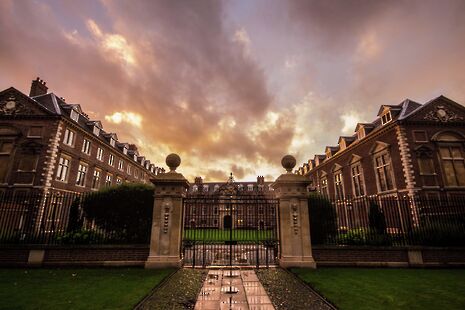Cambridge ‘failing’ local disadvantaged children
A report claims that Cambridge children from “poor backgrounds” have less chance of good grades than those from deprived areas in London

Children from disadvantaged families in Cambridge have less chance of gaining good exam grades than those from the most deprived areas in London, a report has said. The report, by the Social Mobility and Child Poverty Commission, ranked every English council by the prospects of their disadvantaged children.
Identifying Cambridge as a social mobility “coldspot” (meaning it is among the worst-performing 20 per cent of areas), the report condemned Cambridge as one of the “affluent areas” that “fail[s] young people from poor backgrounds”.
The report also found that of children eligible for free school meals in Cambridge, only 15 per cent go on to university, and only 2 per cent to a selective university.
By contrast, in London’s Tower Hamlets, which has the highest rate of child poverty in England, 39 per cent of children eligible for free school meals go on to university, and 10 per cent to a selective university.
The report also revealed that not a single Cambridgeshire pupil eligible for free school meals took up an Oxbridge place in 2014.
Speaking to Varsity about the report’s findings, Cambridge’s Labour MP, Daniel Zeichner, said: “People are right to be shocked by this report’s findings – but it comes as no surprise to those of us who have been pointing out for some time that Cambridge is a very divided city.”
Zeichner also condemned the abolition of Educational Maintenance Allowance by the previous Conservative and Liberal Democrat government, describing the Allowance as “a lifeline for young people from poorer backgrounds”, and claiming that they “also left Cambridgeshire schools woefully under-funded.”
“Getting to Cambridge is only one measure of success, and many of our young people do very well at other educational institutions, but a very divided society is bad for everybody”, he claimed.
“I am sure that the University of Cambridge will want to look once again at the admissions process, but the real challenge lies earlier, and there is much to be done.”
However, Julian Huppert, former Cambridge Liberal Democrat MP, told Varsity that “one of my priorities as the MP for Cambridge” was to secure more funding for the city’s schools, claiming that “neither the previous Tory or Labour governments had been prepared to do anything about it.”
Huppert also stated that he was “pleased with other measures [the coalition] introduced to help pupils in need across the country”, citing “the pupil premium” and “infant free school meals” as examples.
“We simply cannot tolerate the way our education system has let people down for so many decades”, he added.
Professor Dame Athene Donald, Master of Churchill College, also spoke about the report this week. Writing on the Times Higher Education website, she noted that “for many years, Cambridgeshire schools have been underfunded compared with neighbouring counties”.
Furthermore, she acknowledged that although “[d]uring the past year, this shortfall has finally been made up”, but “it will take time for this to increase the numbers from the poorest families entering Cambridge.”
She appealed for people not to “blame Cambridge” as a university for this “failure”, saying: “Look to who controls the purse strings that directly impact on children’s opportunities.”
When questioned about Cambridge’s efforts to improve access for local children, a University of Cambridge spokesperson said that it is “already running projects specifically aimed at raising the academic attainment and aspirations of disadvantaged young people in Cambridge, Cambridgeshire and Peterborough”.
“We are currently considering our local outreach provision and we have identified this as a high priority area for future widening participation work”, he added.
The spokesperson also highlighted the fact that schools in Cambridgeshire and Peterborough “now also have a direct way of developing a relationship” with the university through a “dedicated Area Link College”, St Catharine’s, which organised events that “led to more than 1,500 student interactions” in 2015.
 News / Tompkins Table 2025: Trinity widens gap on Christ’s19 August 2025
News / Tompkins Table 2025: Trinity widens gap on Christ’s19 August 2025 News / Government pulls £277M in funding for Cambridge sewage works relocation25 August 2025
News / Government pulls £277M in funding for Cambridge sewage works relocation25 August 2025 Comment / Who could possibly want more exams?25 August 2025
Comment / Who could possibly want more exams?25 August 2025 News / Over 200 new homes approved on edge of Cambridge23 August 2025
News / Over 200 new homes approved on edge of Cambridge23 August 2025 Interviews / Roger Mosey’s farewell to Cambridge21 August 2025
Interviews / Roger Mosey’s farewell to Cambridge21 August 2025










